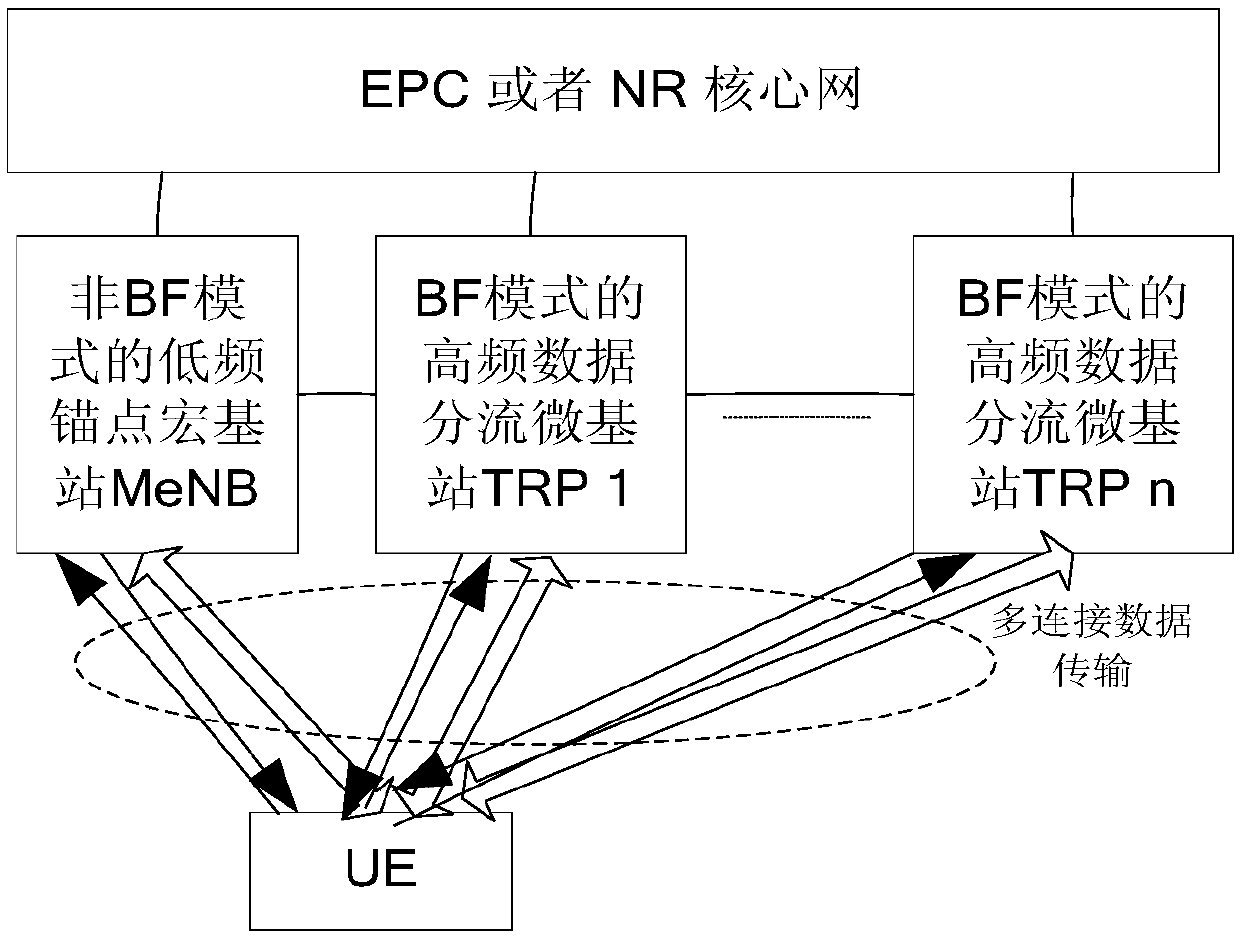Radio link management method and device
A wireless link and management method technology, applied in the field of wireless link management methods and devices, capable of solving problems such as poor mobility of terminals
- Summary
- Abstract
- Description
- Claims
- Application Information
AI Technical Summary
Problems solved by technology
Method used
Image
Examples
Embodiment 1
[0072] In this embodiment, a radio link management method is provided, Figure 6 is a flowchart of a radio link management method according to an embodiment of the present invention, such as Figure 6 As shown, the process includes the following steps:
[0073] Step S602, receiving radio resource management RRM measurement parameters issued by the base station through radio resource control RRC signaling;
[0074] Step S604, according to the RRM measurement parameter, perform RRM measurement on multiple or all beams under the jurisdiction of the target beamforming BF splitting base station transmission and reception point TRP, and obtain the RRM measurement result;
[0075] Step S606, jointly evaluate the RRM measurement result based on multiple or all beams, and switch from the source BF offload base station TRP to the target BF offload base station TRP or additionally add the target BF offload base station TRP according to the evaluation result.
[0076] Optionally, in thi...
Embodiment 2
[0114] Such as Figure 9 As shown, the main reason is that the UE was originally in the dual-connection data transmission state between the MeNB and a certain source Beam of TRP 1, but was later switched to the dual-connection data transmission state between the MeNB and a certain Beam of TRP 2 due to the movement of the UE.
[0115] next to Figure 9 Describe in detail.
[0116] An operator deploys and utilizes high and low frequency tight coupling for dual-connection DC operation. There is Pcell service macro cell coverage on a certain licensed carrier where the low-frequency main control anchor base station MeNB is located, and the remote end connects to the SeNB high-frequency through the X2 interface. Distribute the two nodes of the base station TRP1 and TRP2. There is one TRP1 and one TRP2 on a high-frequency licensed carrier where the SeNB node is located, and they respectively govern the deployment of four service Beams for capacity enhancement in hotspot areas.
[0...
Embodiment 3
[0125] Such as Figure 10 As shown, the UE was originally in the dual-connection data transmission state of NR(m) BS and a source Beam of TRP 1, but was switched to the dual-connection data transmission state of NR(m) BS and a certain Beam of TRP 2 due to UE movement.
[0126] next to Figure 10 Describe in detail.
[0127] An operator deploys and utilizes high and low frequency tight coupling for dual-connection DC operation. There is Pcell service macro cell coverage on a licensed carrier where the low-frequency main control anchor base station NR(m)BS is located. At the remote end, through the Xnew interface, Connect the two nodes of NR(s)BS high-frequency distribution base station TRP1 and TRP2. There is one TRP1 and one TRP2 on a high-frequency licensed carrier where the NR(s)BS node is located, and there are four service beams deployed respectively. Enhanced capacity in hotspot areas.
[0128]Initially, the UE is already under the joint coverage of Pcell and TRP1, so ...
PUM
 Login to View More
Login to View More Abstract
Description
Claims
Application Information
 Login to View More
Login to View More - R&D
- Intellectual Property
- Life Sciences
- Materials
- Tech Scout
- Unparalleled Data Quality
- Higher Quality Content
- 60% Fewer Hallucinations
Browse by: Latest US Patents, China's latest patents, Technical Efficacy Thesaurus, Application Domain, Technology Topic, Popular Technical Reports.
© 2025 PatSnap. All rights reserved.Legal|Privacy policy|Modern Slavery Act Transparency Statement|Sitemap|About US| Contact US: help@patsnap.com



